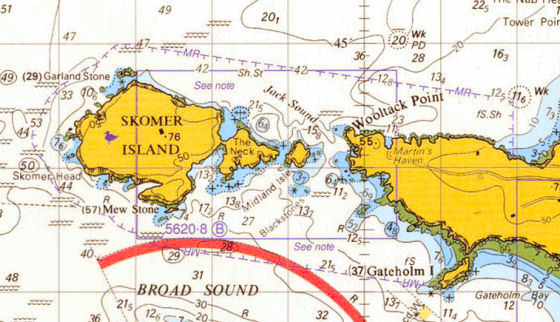|
LOBSTER
- MINIMUM SIZE
confirmed 14/04/98
No person shall take or otherwise remove from any part of
a fishery within the South Wales Sea Fisheries Committee District
any lobster (Homarus gammarus) of less than 90 mm carapace
length.
The carapace
(body shell) shall be measured parallel to the mid line, from
the rear of either eye socket to the distal edge of the carapace.
Lobsters of below this size shall be returned immediately
to the sea at a position as nearby as is possible from where
they were taken.
PROTECTION
OF V-NOTCHED LOBSTERS confirmed
14/4/98
No person shall fish for or take any V-notched or mutilated
lobster of the species Hommarus gammarus. Any lobster so marked
shall be returned immediately to the sea.
For the purpose of this byelaw: 'V-notch' means an indentation
in the shape of the letter 'v' made in any one or more of
the five flaps of the tail fan of the lobster.
'Mutilated lobster' means any lobster which has any of the
five flaps of the tail fan missing or mutilated in such a
manner that could hide or obliterate a V-notch.
'Flap' means any part of the five flaps of the tail fan of
the lobster.
CRABS
- MINIMUM SIZE confirmed
4/12/97
No person shall take or otherwise remove from any part of
a fishery within the South Wales Sea Fisheries Committee District
any crab of the species Cancer pagurus, which measures less
than 140 mm across the broadest part of the back.
Crabs of below this size shall be returned immediately to
the sea at a position as nearby as is possible from where
they were taken.
CRAWFISH
- MINIMUM SIZE confirmed
4/12/97
No person shall take or otherwise remove from a fishery within
any part of the South Wales Sea Fisheries Committee District
any Crawfish (Palinurus elephas) with a length of less than
110 millimetres being the length measured along the centre
line of the carapace (body shell) from the tip of the central
rostral spine to the distal edge of the carapace.
Crawfish of below this size shall be returned immediately
to the sea at a position as nearby as is possible from where
they were taken.
SCALLOPS
- MINIMUM SIZE
confirmed 4/12/97
No person shall take or otherwise remove from any part of
a fishery within the South Wales Sea Fisheries Committee District
any scallop of the species Pecten maximus which measures
less than 110 mm across the width of the shell nor any part
of any scallop which is detached from the shell.
Scallops of less than this size shall be returned immediately
to the sea at a position as nearby as possible from where
they were taken.
OTHER
SHELLFISH - MINIMUM SIZES
confirmed 4/12/97
No person shall take or otherwise remove from any part of
a fishery within the South Wales Sea Fisheries Committee District:-
- Any
oyster of the species Ostrea edulis known as the European
flat oyster that will pass through a gauge having a circular
opening of 70 mm in diameter.
- Any
mussel (Mytilus edulis) of less than 51 mm in length.
- Any
cockle (Cerastoderma edule) that will pass through the gauge
of a riddle or like instrument used for the purpose of riddling,
sorting or sifting cockles which has an aperture 19 mm square.
- Any
whelk (Buccinum undatum) which would pass through a riddle
or any like instrument having bars which are square in section
and which are not less than 35mm apart.
Shellfish,
the taking or removal of which is prohibited by this byelaw,
shall be returned immediately to the sea at a position as
nearby as is possible from where they were taken.
PROHIBITED
AREA FOR SCALLOP FISHING - SKOMER confirmed
4/12/97
No person shall fish for, take or land any scallop of the
species Pecten maximus or of the species Chlamys
opercularis from the area detailed below.
From the
northern point of Gateholm Island due North to the mainland.
From the
southern point of Gateholm Island a straight line in a direction
278° to a position 2.75 cables due south of the western
extremity of Mew Stone, thence 2.75 cables off the mainland
shore of Skomer around the west coast of the Island to a position
2 cables due north of the Garland Stone, thence a straight
line in a direction of 098° to a position 51°44.5'N,05°lYW,
thence due south to the mainland coast. (see map below - the
boundary is marked as: T
T T T T T T T T).

The boundary
marks for the Skomer Marine Reserve
|